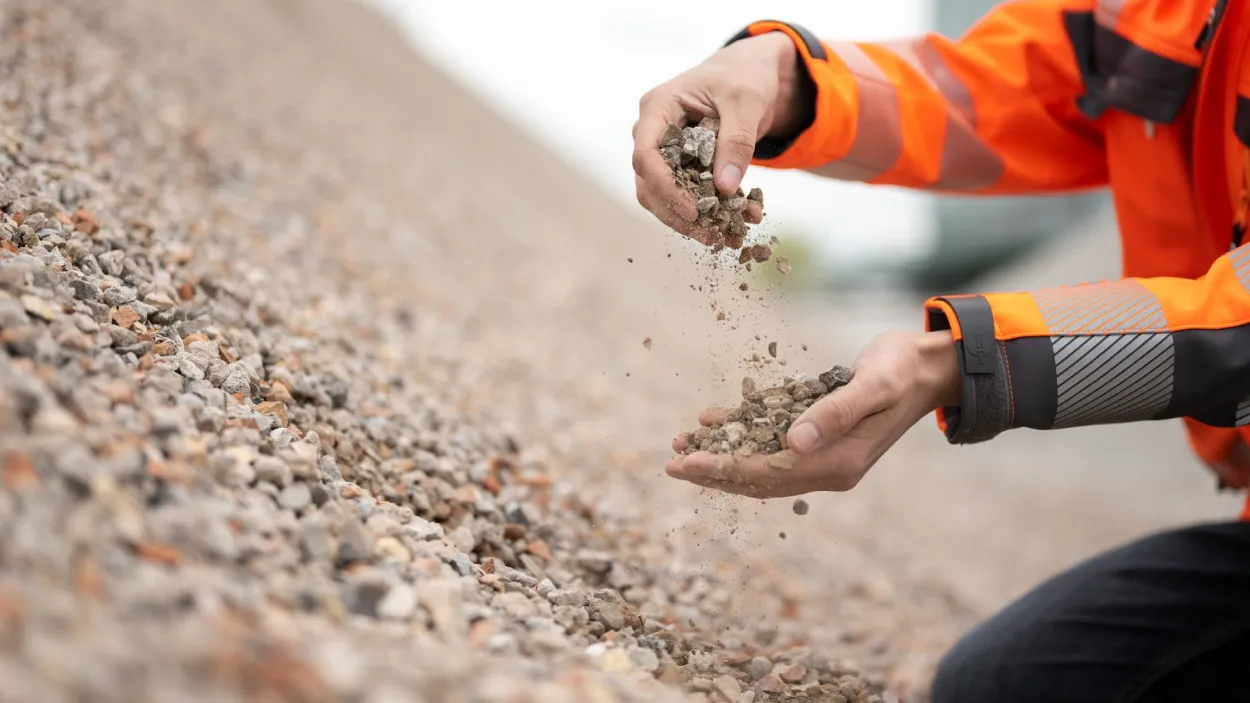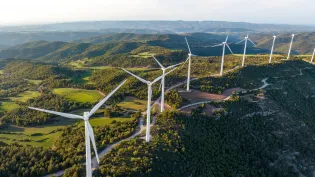Fast-forwarding carbon removal with neustark
Imagine if you could accelerate concrete carbonation - the natural process by which concrete absorbs CO2 from the atmosphere - from a century to hours.
The startup neustark, part of the Holcim MAQER Ventures portfolio, has developed a solution to do exactly that: their mineralization technology permanently binds CO2 in recycled concrete. At Holcim, we are rolling it out at our recycling plants, as we drive circular construction using innovative technologies while also deploying a powerful tool for decarbonization.

We know that carbon removal is indispensable for our climate goals. But it is a nascent industry, and needs to scale up rapidly to meet the needs. Neustark has quickly established itself as the market leader in carbon removal via mineralization, also thanks to great partners like Holcim that have deployed our technology.
How does it work?
Neustark captures, transports and stores CO2 by working with source partners (biogas plants) and storage partners (concrete recyclers, like Holcim) located in close proximity to each other.
The process begins at biogas plants, where neustark captures and liquifies CO2 that would have otherwise been emitted into the atmosphere, and then transports it to nearby concrete recycling plants.
The recycling plants receive and process old concrete coming from building demolition sites (construction demolition materials). Then, neustark uses its technology to inject CO2 into concrete granules, triggering a mineralization process that transforms the CO2 into rock, and storing it permanently, with the risk of reversal being slim to none, even if the carbonated granules are use to build new infrastructure and demolished again.
These carbonated concrete granules can then be used to produce recycled concrete and other building materials to drive low-carbon, circular construction.
What is carbon mineralization?
Carbon mineralization is the process in which CO2 is neutralized when it reacts with certain minerals, and therefore serves as a method of carbon capture, utilization and storage (CCUS).
Partnering to drive decarbonization
Neustark has the technology to store carbon, and Holcim has the concrete in which to store it. In 2023, we invested in neustark to scale up circular and low-carbon construction.
Through our open innovation unit Holcim MAQER Ventures, we have been operating a mobile neustark storage plant in Switzerland since May 2023, aiming to store 500 tons of CO2 per year in recycled concrete throughout the country.
Holcim Switzerland used the technology to produce 4,200 m3 of ECOPact Recarb concrete for the construction of Zephyr Ost, a new building in Tech Cluster Zug. Using this advanced recycled concrete, the project saved 71 tons of CO2 – equivalent to the annual carbon absorption of 3,500 trees.
And the impact of our collaboration has not gone unrecognized: the partnership won the 2023 Deloitte “Technology Fast 50” Venture Client Award for outstanding collaborations between startups and large companies.

Our contribution and collaboration with startups such as neustark create true wins and inspire other startups to team up with Holcim.

Finding solutions to help us reinvent how the world builds is essential to achieving a net-zero built environment, and startups are a growing avenue of new ideas and approaches. Holcim’s partnership with neustark highlights our shared commitment to leading the way in sustainable construction practices and technologies.
This is just the beginning: after the successful pilot in Switzerland and thanks to a strategic collaboration agreement, hundreds of similar carbon storage plants at Holcim sites across the world will follow in the coming years. Together, neustark and Holcim will durably remove thousands and thousands of tons of CO2 from the atmosphere, generating crucial negative emissions towards our net-zero ambitions.




































